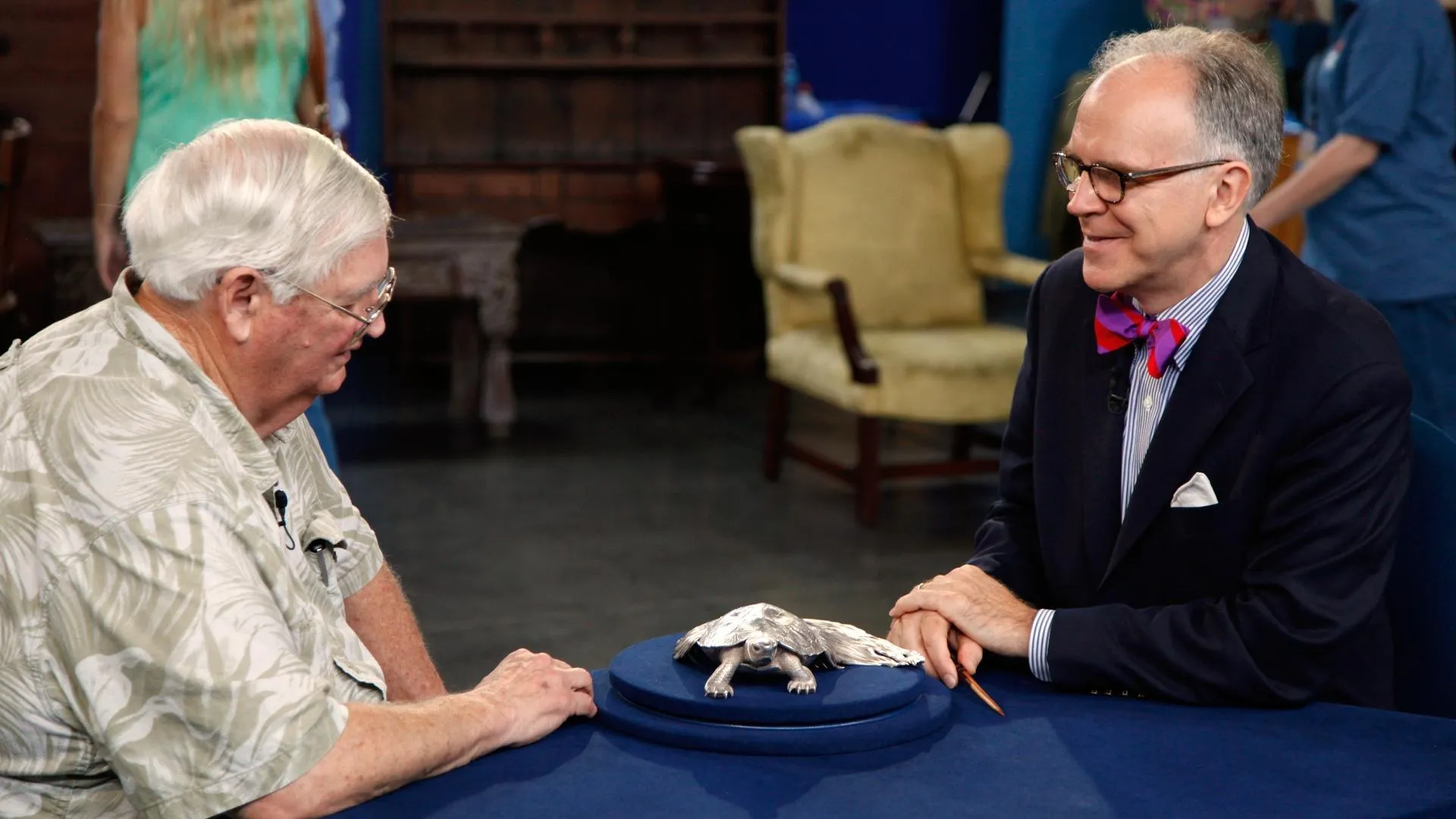APPRAISER: Stephanie, where did you get this whirligig?
GUEST: Well, my husband and I, even before we were married, we used to go to auctions. This was an auction in Williamsport, Pennsylvania, and we just saw him and liked him.
APPRAISER: When did you buy it?
GUEST: Probably the early '70s.
APPRAISER: Okay. What did you pay for it?
GUEST: We think it was $150, which was huge then.
APPRAISER: What attracted you to buy this?
GUEST: He was colorful, he was just... and at one time, he had a very patriotic bent, he had his flag. But I just thought he was fun.
APPRAISER: And what happened to his flag?
GUEST: We don't know. We both say we didn't do it. (laughing)
APPRAISER: It just poof, vanished one day.
GUEST: Yes, and it was an American flag.
APPRAISER: And was it wood, or was it a paper flag?
GUEST: It was wood.
APPRAISER: Okay, that's an interesting story. And of course, we can see where the flag used to be right here. When you pulled it out of your bag and I saw the bird on top, that was, to me, was sort of the tipoff that this was a Pennsylvania whirligig. And of course, whirligigs are meant to be outside, most of them. This one was never meant to be outside. It was meant as a little whimsy to put on a dresser top or a table, and this was going to be used inside as a decorative piece. What I love about this piece is the great detail. I mean, the guy's got freckles, you've got this great carved pipe, which by the way is a very sort of Pennsylvania German-looking pipe. Everything about this screams 20th-century Pennsylvania folk art. The reason I say it's 20th century is that the flower in his eyes and his belt are made out of cut aluminum. The paint also doesn't have the sort of aging and crackling that I would expect to see from the 19th century. When you look at it, you'll see that the arms are not carved out of a single piece of wood. They are in fact carved out of a couple different pieces of wood to get that curve in there. Just easier to do it. But everything else is carved out of one piece of wood. And I just love it. I'm just drawn to this kind of folk art, and the good news is, a lot of other collectors are, too. I would think that if you were to put this in an auction today, it might fetch somewhere between $6,000 and $8,000.
GUEST: (laughing)
APPRAISER: Now, what would happen if the flag was still there? I think that you might be able to bump that up to maybe $8,000 to $10,000.
GUEST: Thank you!











